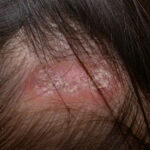Disruptive Behavior Disorders (DBDs) encompass a range of behavioral issues characterized by ongoing patterns of uncooperative, defiant, and hostile actions toward authority figures, which significantly impair daily functioning and social interactions. These disorders are predominantly observed in children and adolescents, often leading to challenges in educational settings, family dynamics, and peer relationships.

Types of Disruptive Behavior Disorders
- Oppositional Defiant Disorder (ODD):
- Definition: ODD is marked by a consistent pattern of angry or irritable mood, argumentative or defiant behavior, and vindictiveness toward authority figures.
- Symptoms:
- Frequent temper tantrums
- Excessive arguing with adults
- Active defiance and refusal to comply with requests and rules
- Deliberate attempts to annoy or upset others
- Blaming others for personal mistakes or misbehavior
- Prevalence: ODD typically manifests before the age of eight and is more common in boys than girls.
- Conduct Disorder (CD):
- Definition: CD involves a repetitive and persistent pattern of behavior that violates the rights of others or major societal norms and rules.
- Symptoms:
- Aggressive conduct causing physical harm to people or animals
- Destruction of property
- Deceitfulness or theft
- Serious violations of rules, such as truancy or running away from home
- Prevalence: CD can develop in childhood or adolescence and is more prevalent in males.
- Intermittent Explosive Disorder (IED):
- Definition: IED is characterized by sudden episodes of unwarranted anger, manifesting in verbal or physical aggression.
- Symptoms:
- Recurrent outbursts of verbal or physical aggression
- Episodes are disproportionate to the situation
- Outbursts are not premeditated and cause significant distress
- Prevalence: IED is estimated to affect about 2.7% of the population and typically begins in late childhood or adolescence.
Causes and Risk Factors
The development of DBDs is multifaceted, involving a combination of genetic, environmental, and psychological factors:
- Genetic Factors: A family history of mental health disorders, such as ADHD, mood disorders, or substance abuse, can increase the risk of DBDs.
- Environmental Factors: Exposure to violence, inconsistent or harsh disciplinary practices, and family instability are significant contributors.
- Psychological Factors: Children with inherent difficulties in processing social cues or regulating emotions may be more susceptible.
Diagnosis
Accurate diagnosis of DBDs necessitates a comprehensive evaluation by mental health professionals:
- Clinical Interviews: Engaging with the child and caregivers to gather detailed behavioral histories.
- Behavioral Assessments: Utilizing standardized questionnaires and observation tools to assess the frequency and severity of behaviors.
- Collateral Information: Collecting reports from schools, peers, and other relevant sources to understand the child’s behavior across different settings.
Treatment Approaches
Effective management of DBDs often involves a combination of therapeutic strategies:
- Psychotherapy:
- Cognitive Behavioral Therapy (CBT): Assists children in recognizing and modifying negative thought patterns and behaviors.
- Parent Management Training (PMT): Equips parents with techniques to effectively manage and respond to their child’s disruptive behaviors.
- Family Therapy: Addresses familial dynamics and fosters improved communication and problem-solving skills.
- Pharmacotherapy:
- While no medications are specifically approved for DBDs, certain drugs may be prescribed to manage associated symptoms or co-occurring conditions, such as ADHD or mood disorders.
- School-Based Interventions:
- Implementing individualized education plans (IEPs) and behavioral interventions within the school environment to support the child’s learning and social interactions.
Prognosis and Long-Term Outcomes
With early intervention and consistent treatment, many children with DBDs can develop effective coping mechanisms and lead productive lives. However, without appropriate management, these disorders can persist into adulthood, leading to more severe psychological and social challenges.

